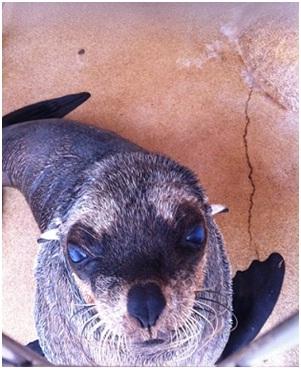Olfactory discrimination of South African fur seals (Arctocephalus pusillus) for enantiomers

The sense of smell in marine mammals is traditionally thought to be poor. However, increasing evidence suggests that pinnipeds may use their sense of smell in a variety of behavioral contexts including communication, foraging, food selection, and reproduction. Using a food-rewarded two-choice instrumental conditioning paradigm, I assessed the ability of South African fur seals, Arctocephalus pusillus, to discriminate between 12 enantiomeric odor pairs, that is, between odorants that are identical in structure except for chirality. The fur seals significantly discriminated between eight out of the twelve odor pairs (according to p < 0.05, with carvone, dihydrocarvone, dihydrocarveol, limonene oxide, menthol, beta-citronellol, fenchone, and alpha-pinene), and failed with only four odor pairs (isopulegol, rose oxide, limonene, and camphor). No significant differences in performance were found between the animals (p > 0.05). Cross-species comparisons between the olfactory performance of the fur seals and that of other species previously tested on the same set of odor pairs lend further support to the notion that the relative size of the olfactory bulbs is not a reliable predictor of olfactory discrimination abilities. The results of the present study suggest that sense of smell may play an important and hitherto underestimated role in regulating the behavior of fur seals.
Responsible for this page:
Director of undergraduate studies Biology
Last updated:
04/22/12
